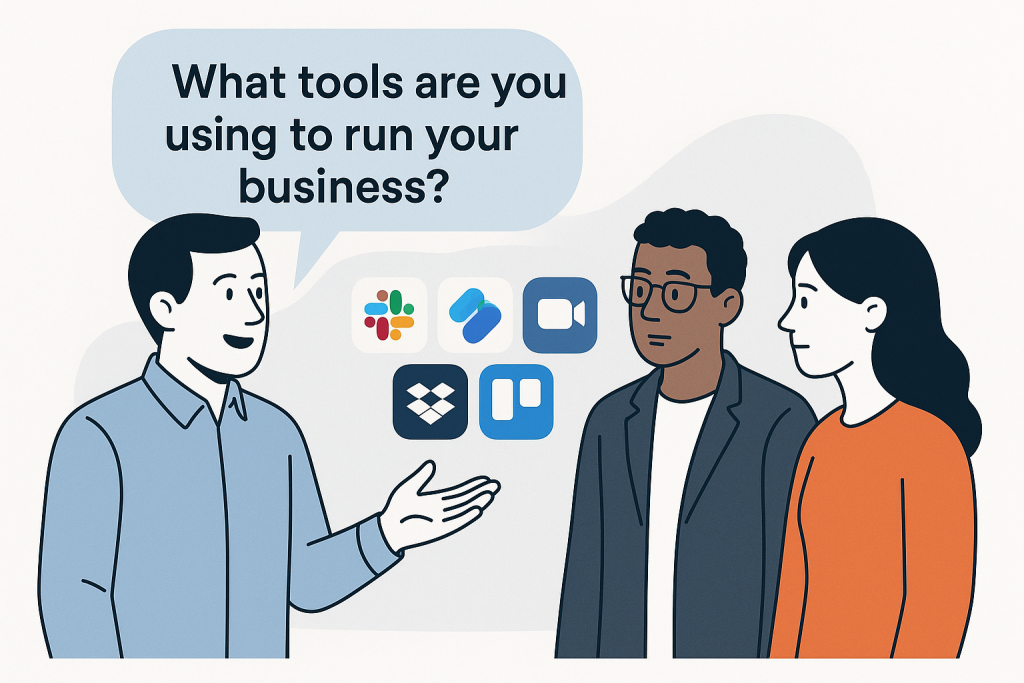Why Many Businesses Pay for Technology They Don’t Use
I often ask business owners and clients a simple question:
“What tools are you using to run your business today?”
The answers come quickly. Microsoft 365. Slack. Zoom. Monday.com, Google, Sage, Trello. Some mention CRM trials, others name industry specific apps. On paper, it looks impressive a modern tech stack filled with well-known platforms.
But when I follow up with a second question
“How much of those tools are your teams actually using?”
the room usually goes quiet.

The truth is that many businesses are paying for software they don’t fully use.
Features Left Untouched
Microsoft 365, for example, includes Teams, SharePoint, OneDrive, Planner, and Power Automate. Yet many organisations use it only for email and Word documents. Slack is introduced for messaging while Teams is left dormant. Dropbox is added even though OneDrive is already in place. Each platform carries its own monthly fee, and costs add up quickly.
Old Habits Persist
The issue is not that the tools lack capability. It is that old work habits remain. Staff continue to share files as email attachments instead of shared links. Project management features sit idle while teams rely on WhatsApp groups or handwritten notes. The subscription is paid, but the promised efficiency never arrives.
Software Bloat
Over time, businesses build up overlapping platforms. Communication happens across multiple apps. Files are scattered. Leaders spend more on subscriptions but see little improvement in productivity. This is what I call “software bloat” too many tools, too little value.
The Role of Leadership
Technology adoption is not solved by buying licenses. It requires leadership. Staff must be trained, processes updated, and redundant tools removed. Without direction, employees default to what feels familiar, and the investment in technology goes to waste.
Practical Steps Forward
- Audit your subscriptions. Know what you pay for and what is used.
- Consolidate tools. If Microsoft 365 already covers your needs, consider dropping overlapping platforms.
- Train staff to use the features that are available. Adoption is not automatic.
- Review usage quarterly to ensure tools deliver value.
The promise of digital transformation is not in the number of apps a business subscribes to. It lies in how effectively those tools are embedded into daily work.
Questions to Consider
- Has your business paid for technology that employees never adopted?
- Do you prefer using multiple specialised apps, or fewer all-in-one platforms?
- What is the most underused tool in your organisation today?
For small businesses, the real challenge is not buying software. It is making sure every subscription pays its way.